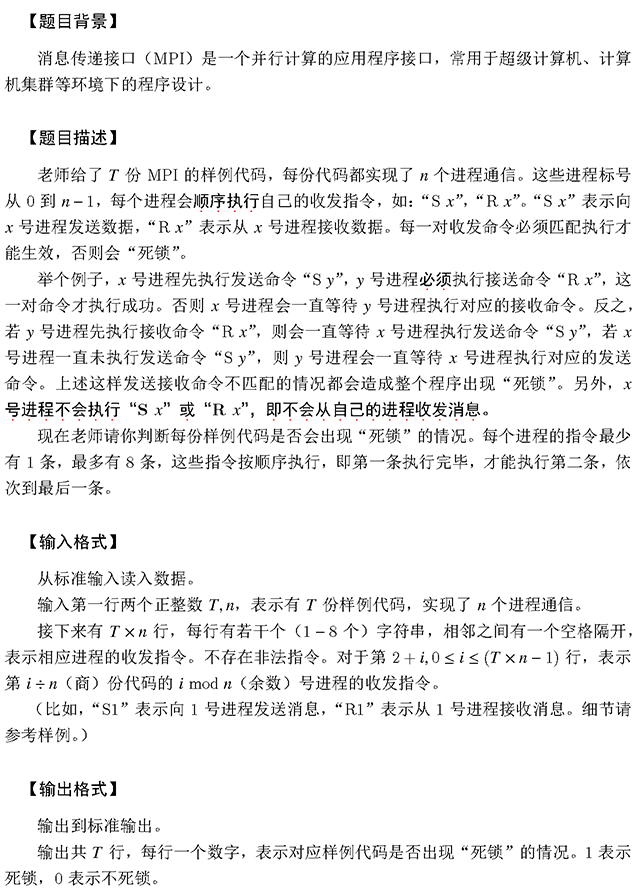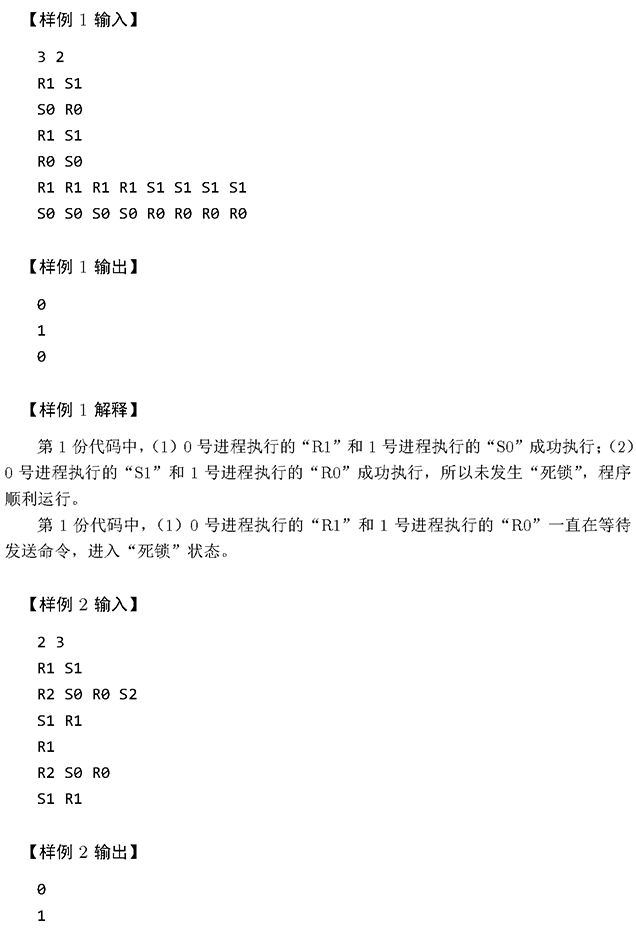

样例1
输入:
3 2
R1 S1
S0 R0
R1 S1
R0 S0
R1 R1 R1 R1 S1 S1 S1 S1
S0 S0 S0 S0 R0 R0 R0 R0
输出:
0
1
0
样例二:
输入:
2 3
R1 S1
R2 S0 R0 S2
S1 R1
R1
R2 S0 R0
S1 R1
输出:
0
1
思路:
1.建一个结构体,存x S/R y ,注意,x 可能不止一位数。用队列顺序存储每个进程。
2.用getchar()来取字符串后面的字符,如果取到的是换行,那么该进程结束,去取下一个进程。
3.如果顺序遍历每个进程都没有匹配成功的话,匹配结束,如果还存在队列不为空的话,则发生了死锁。
#include <algorithm> #include <iostream> #include <cstdio> #include <queue> using namespace std; const int maxn = 1e5 + 5; struct Node { int x,z; char y; }; int main() { int t,n; cin >> t >> n; while(t--) { queue<Node>q[n+1]; for(int i = 0; i < n; i++) { while(!q[i].empty()) q[i].pop(); } for(int i = 0; i < n; i++) { string s; char c; while(cin >> s) { c = getchar(); Node temp; temp.x = i; temp.y = s[0]; temp.z = 0; for(int j = 1; j < s.length(); j++){ temp.z = temp.z*10 + s[j] - '0'; } q[i].push(temp); if(c == ' ') { break; } } } int flag = 0; int k = 0; while(1) { k = 0; for(int i = 0; i < n; i++){ if(q[i].empty()) continue; Node temp = q[i].front(); int x = temp.x; char y ; int z = temp.z; if(temp.y == 'R') y = 'S'; else y = 'R'; if(q[z].empty()) { flag = 1; break; } Node temp2 = q[z].front(); if(temp2.z == x && temp2.y == y) { q[i].pop(); q[z].pop(); i--; k++; } else { continue; } } if(k == 0) break; } k = 0; for(int i = 0; i < n; i++) { if(!q[i].empty()){ flag = 1; break; } } if(flag == 1) cout << 1 << endl; else cout << 0 <<endl; } return 0; }